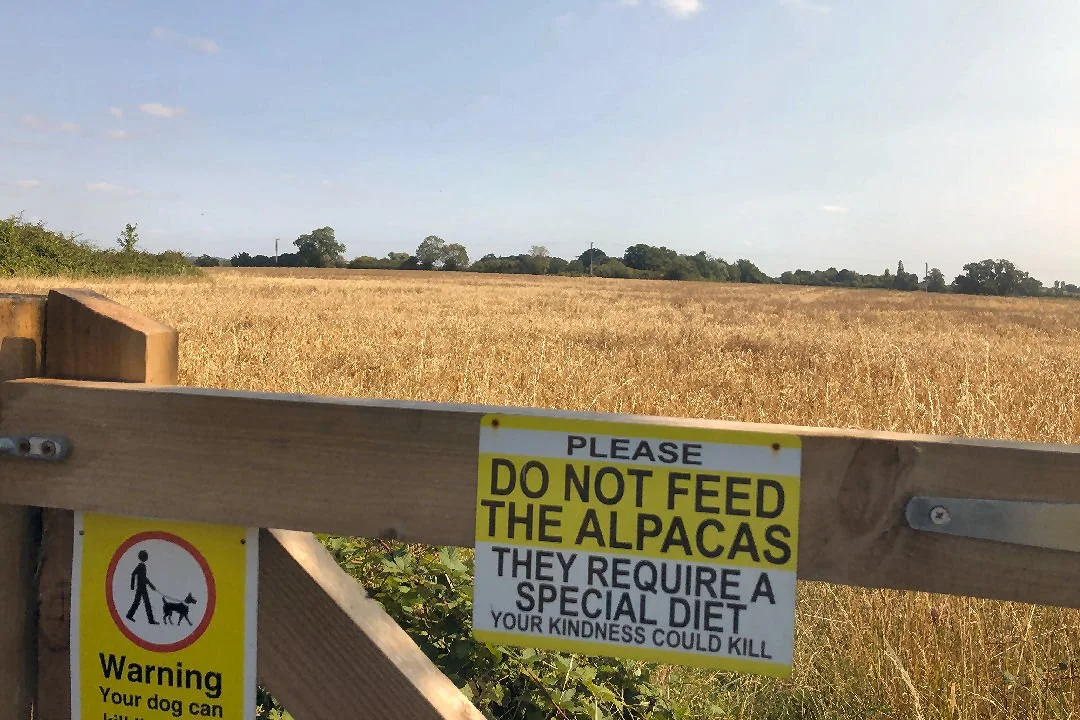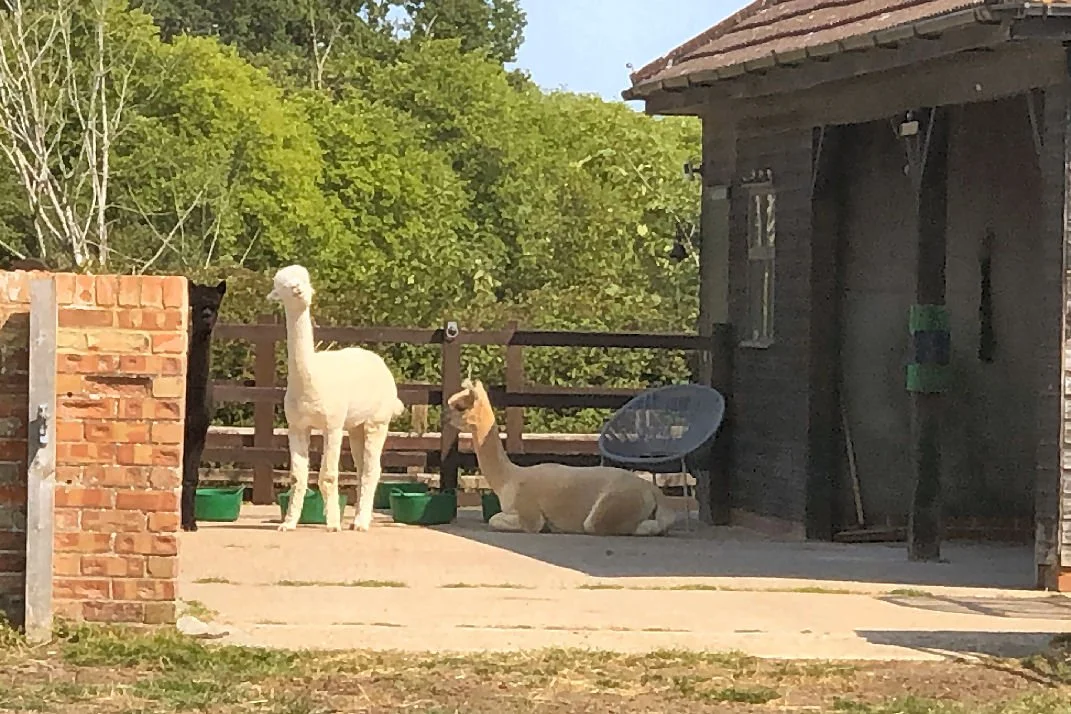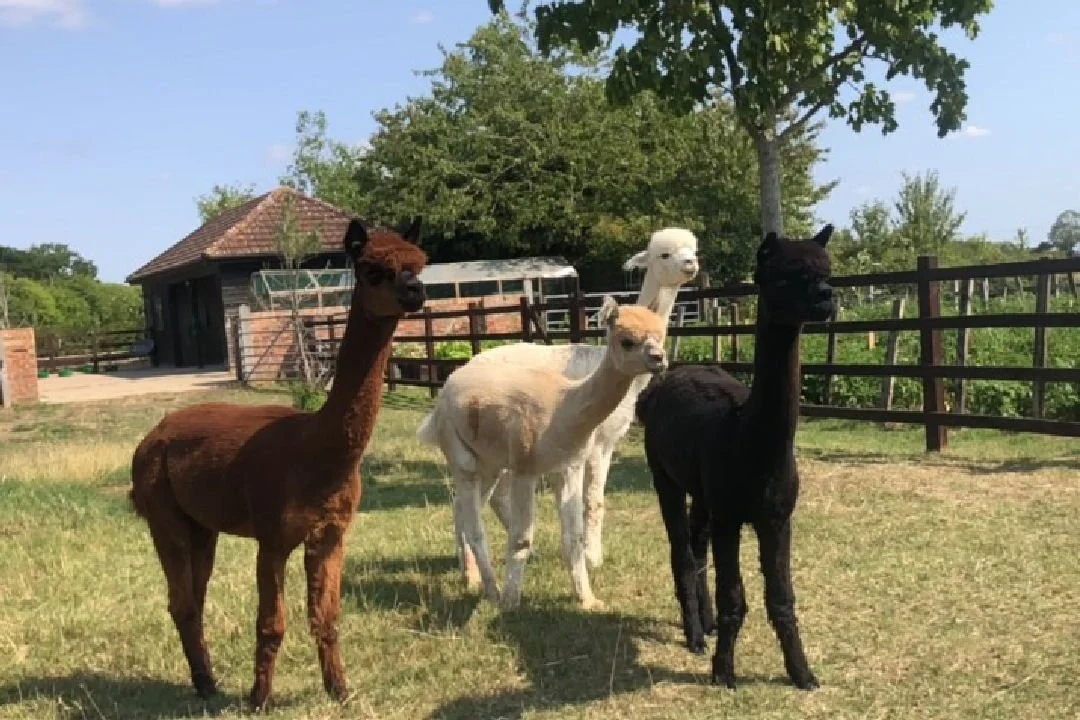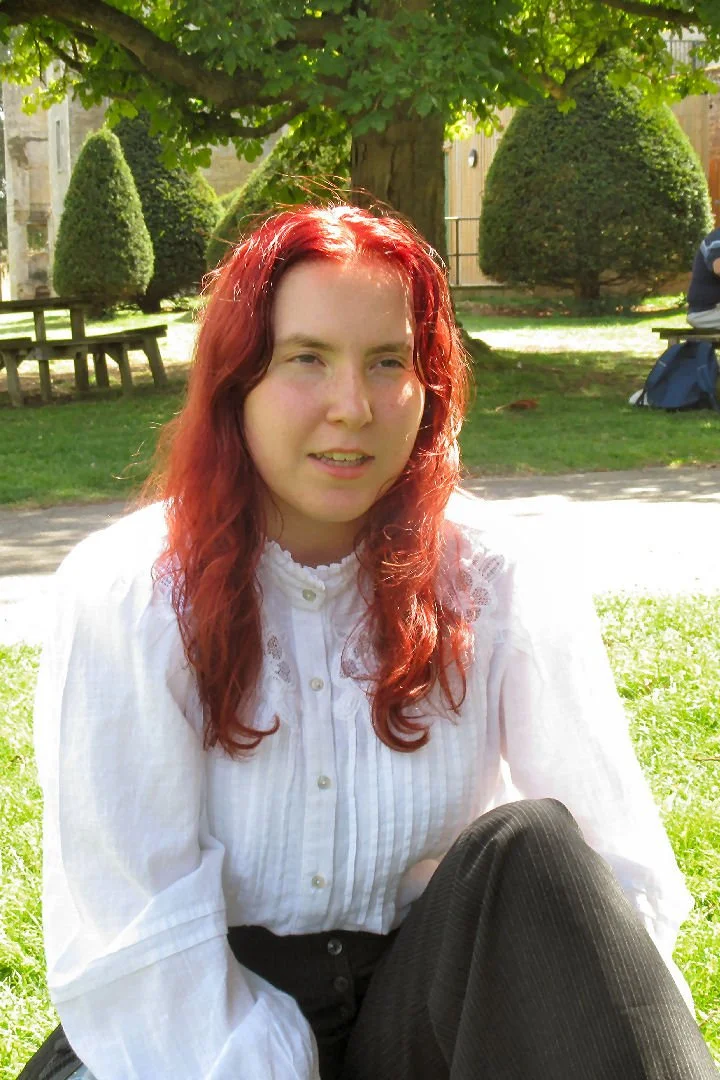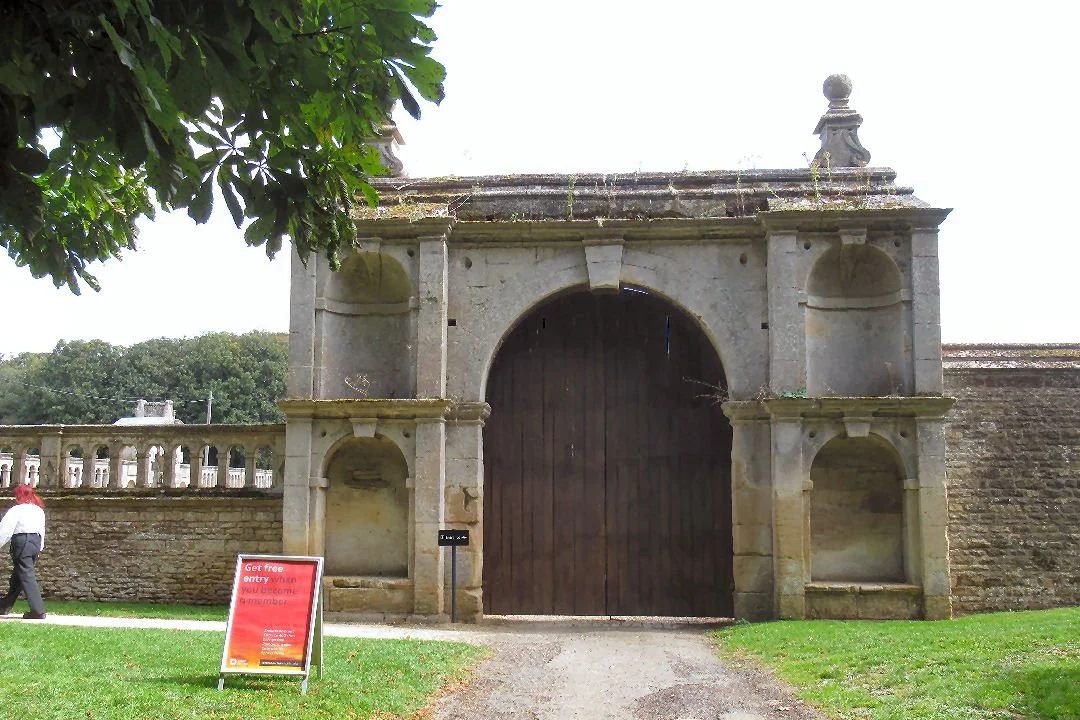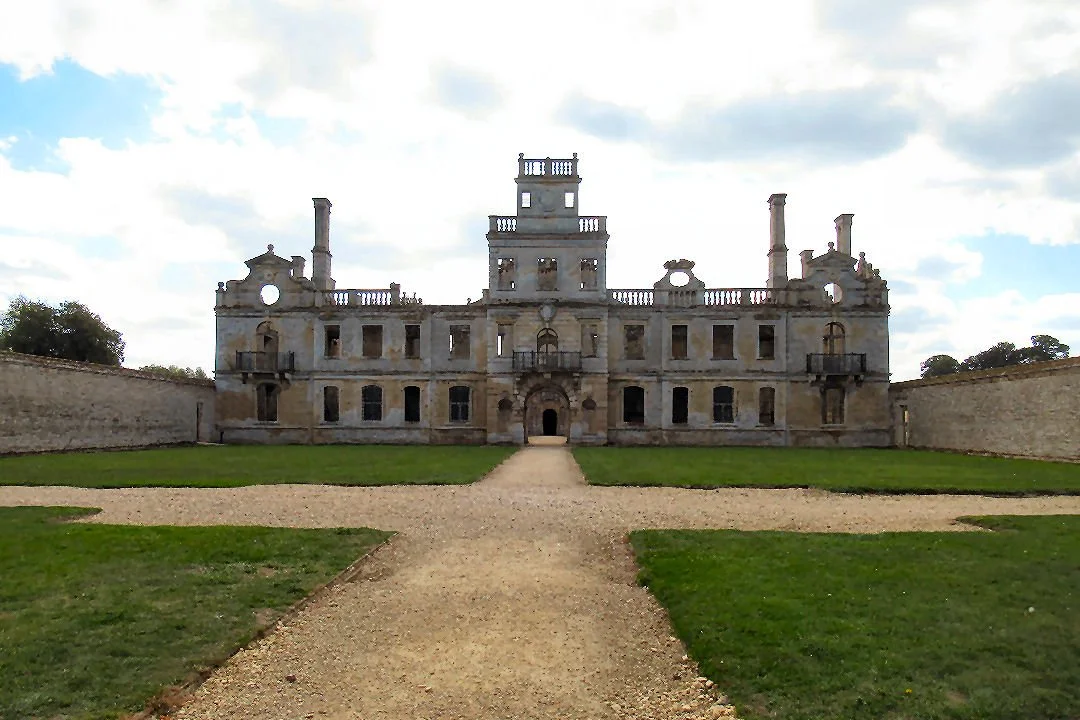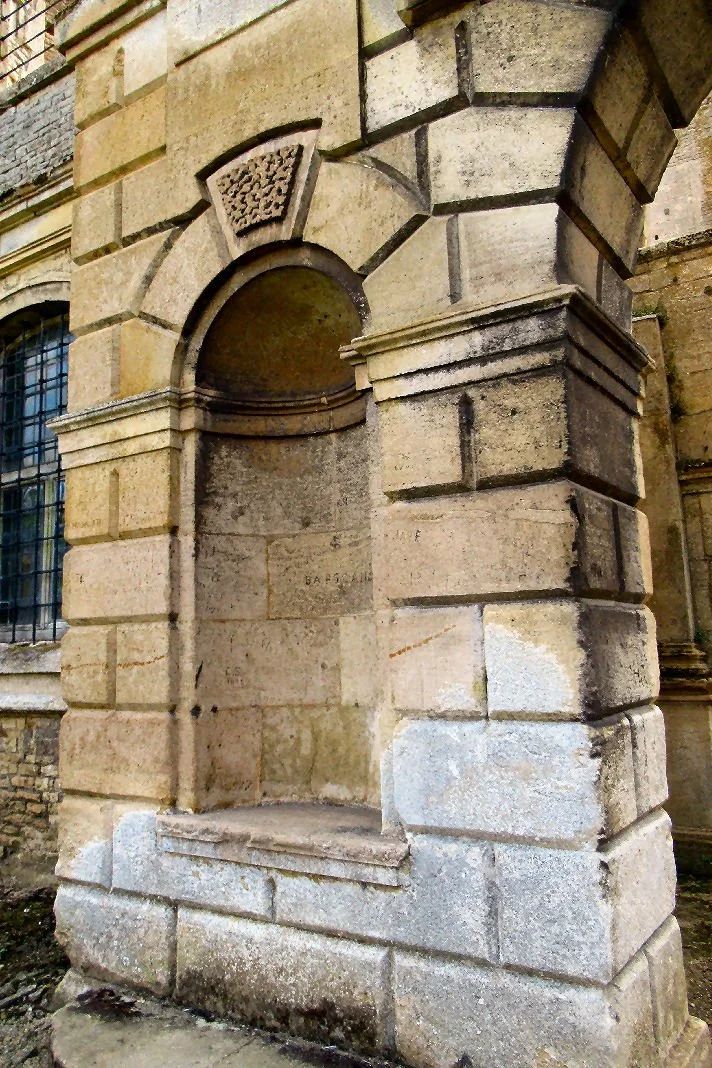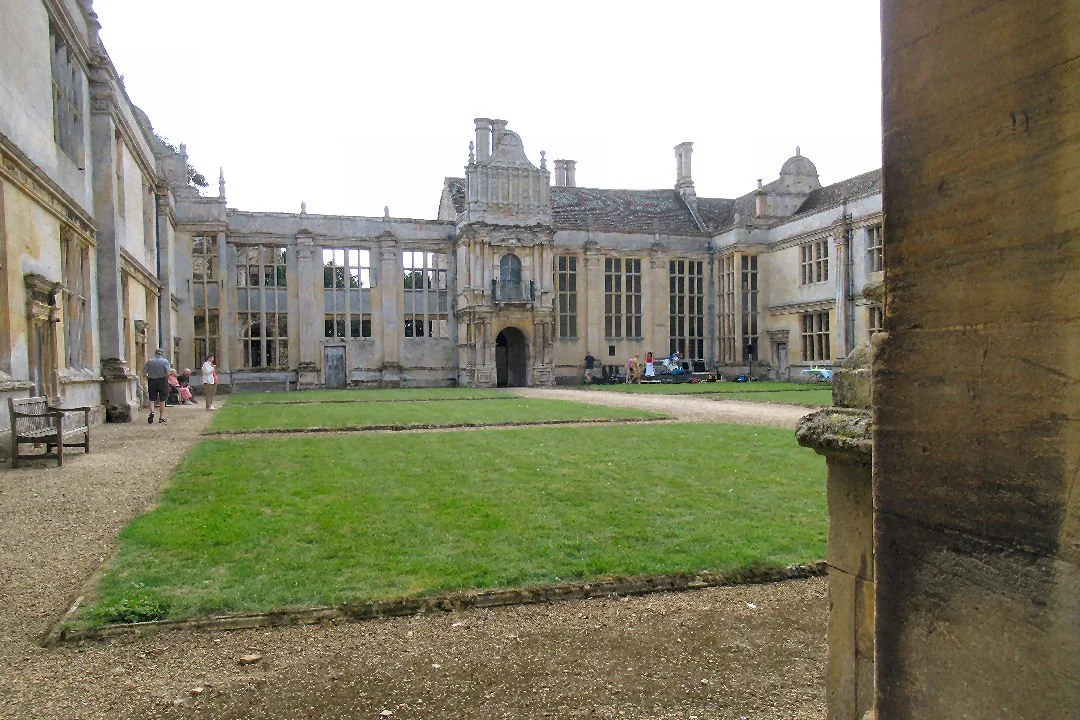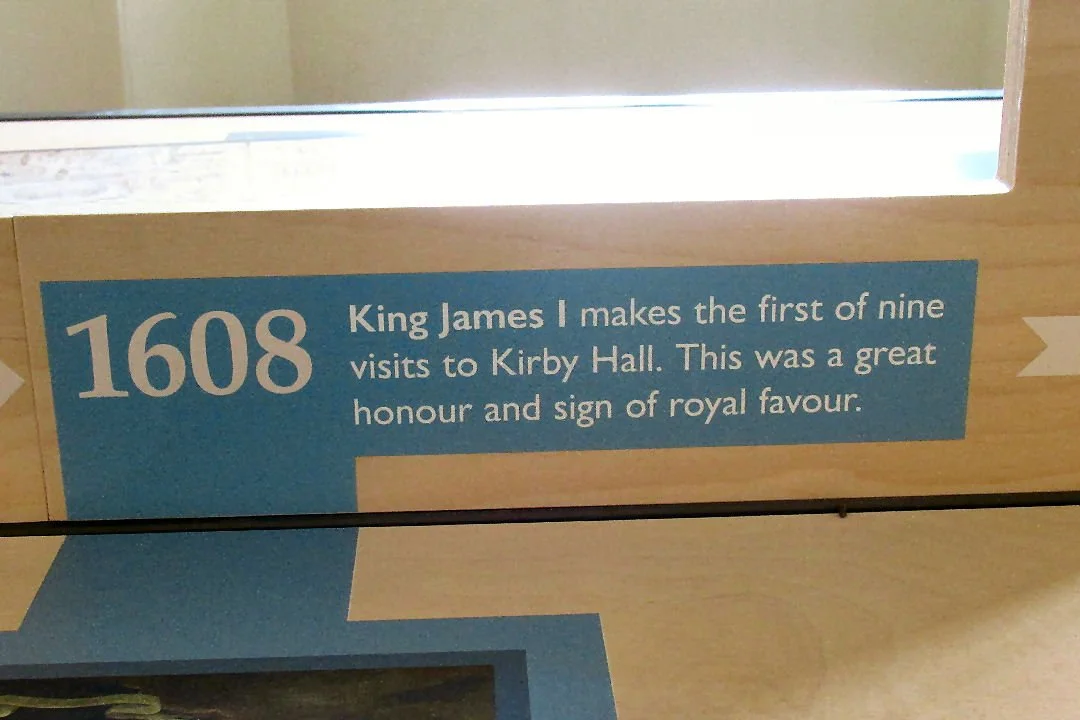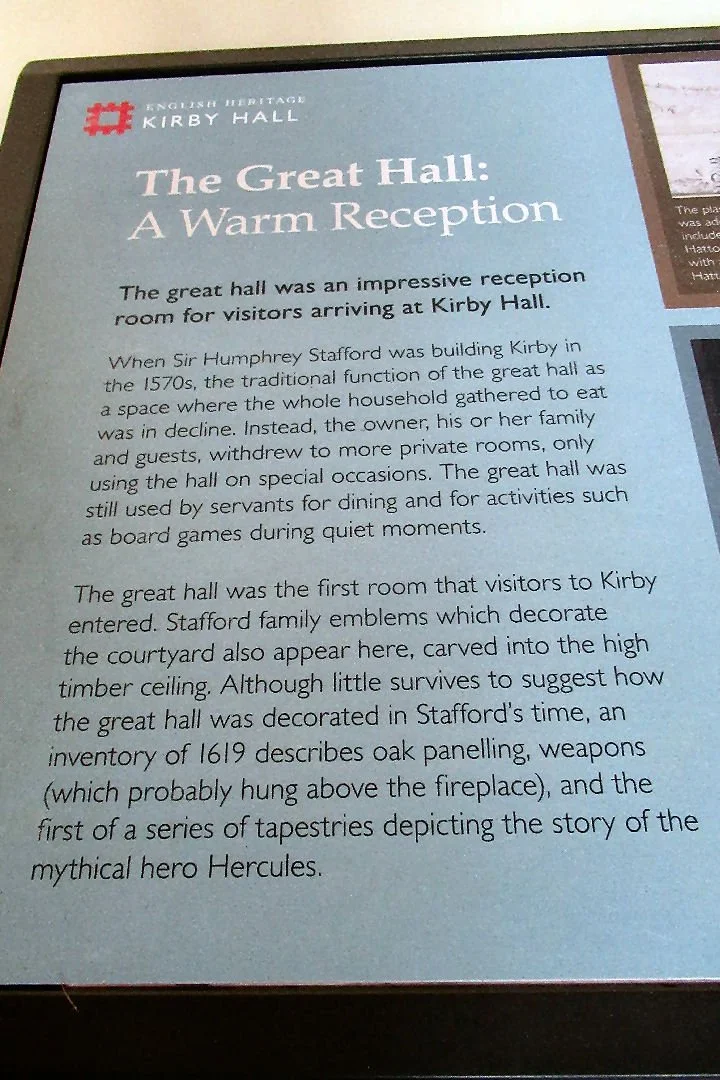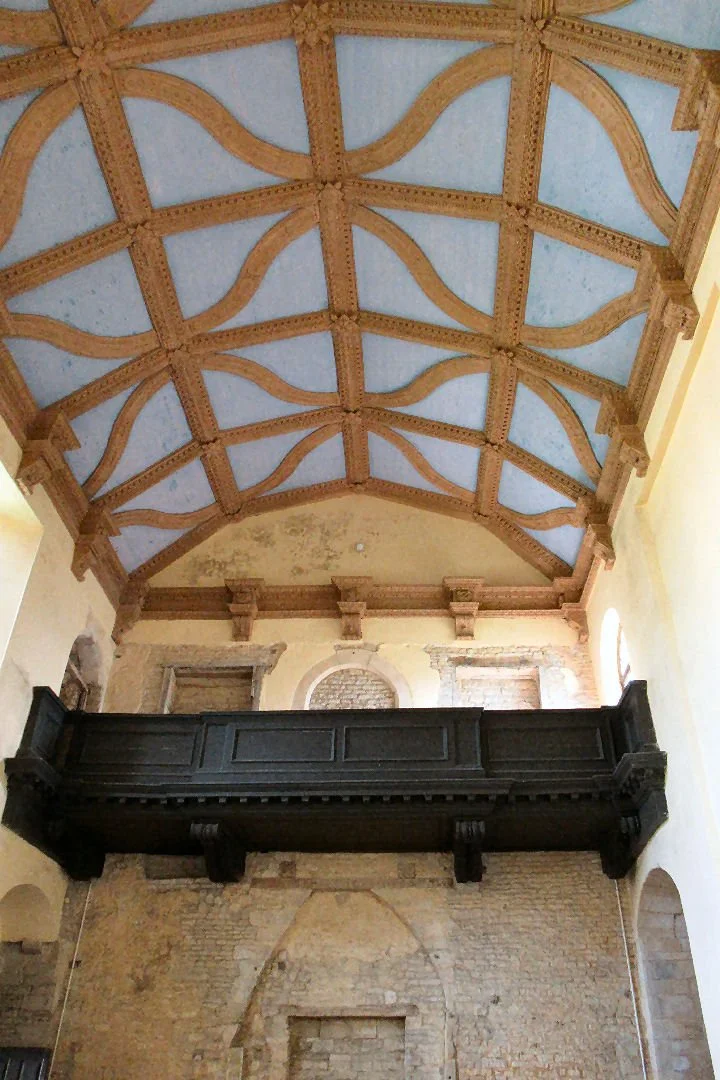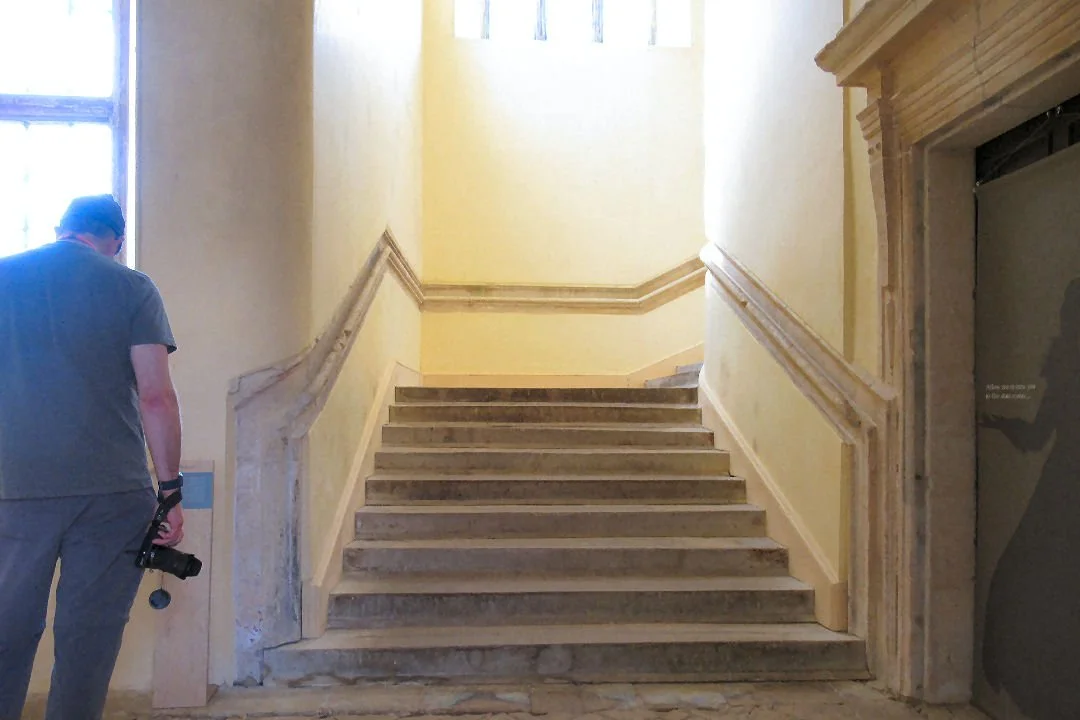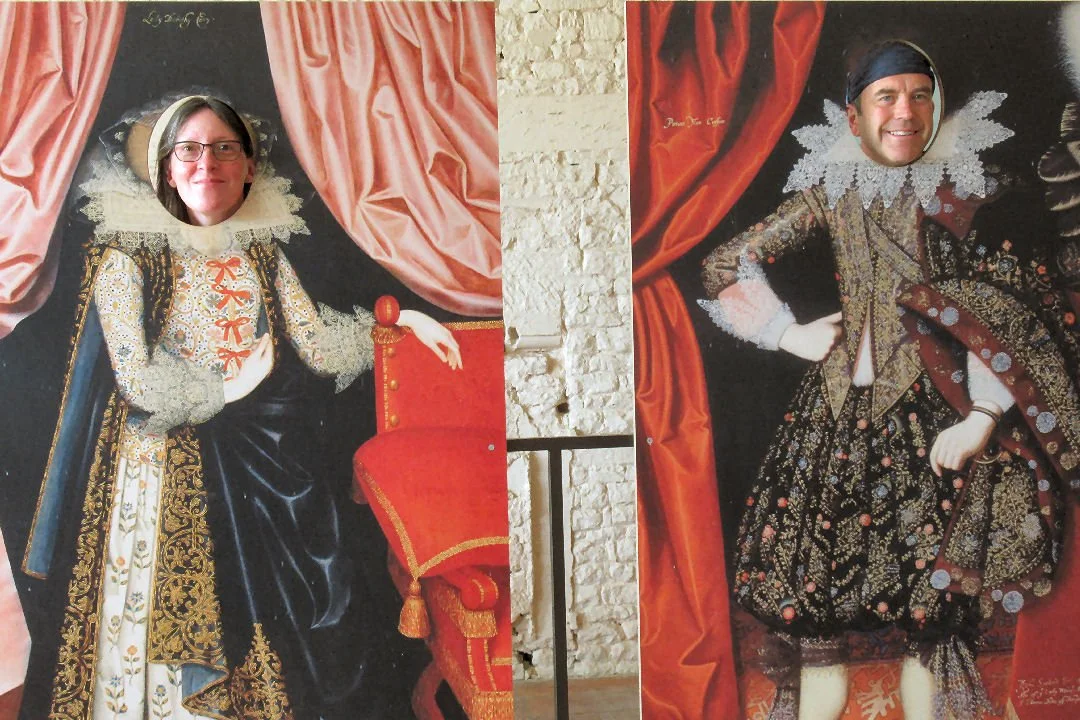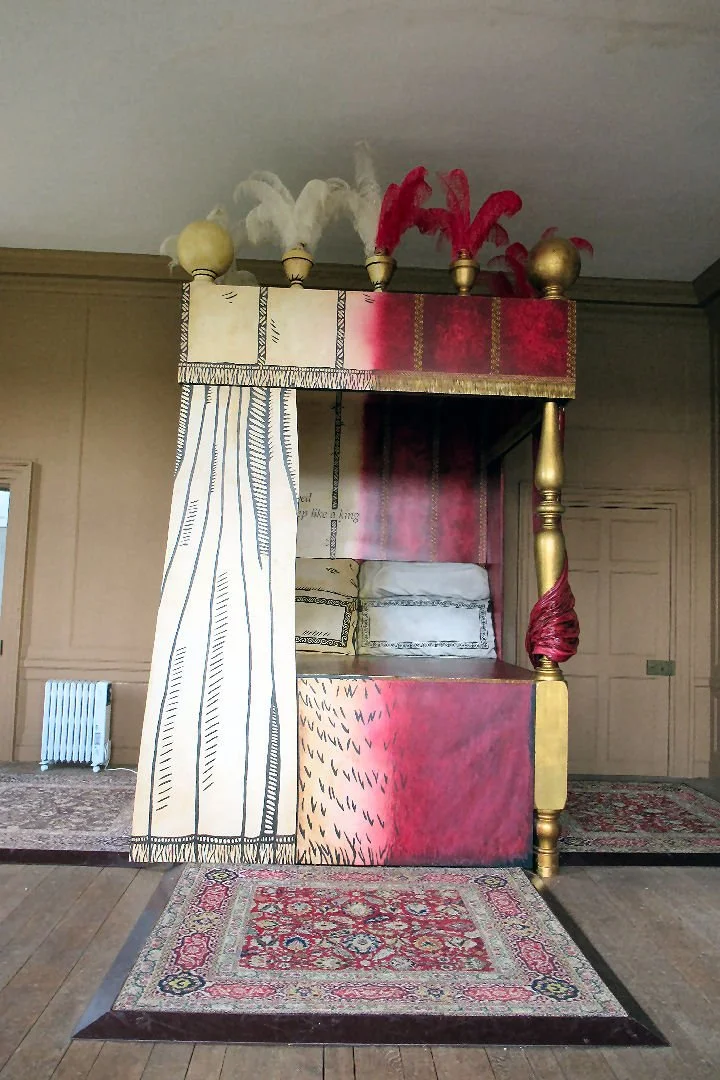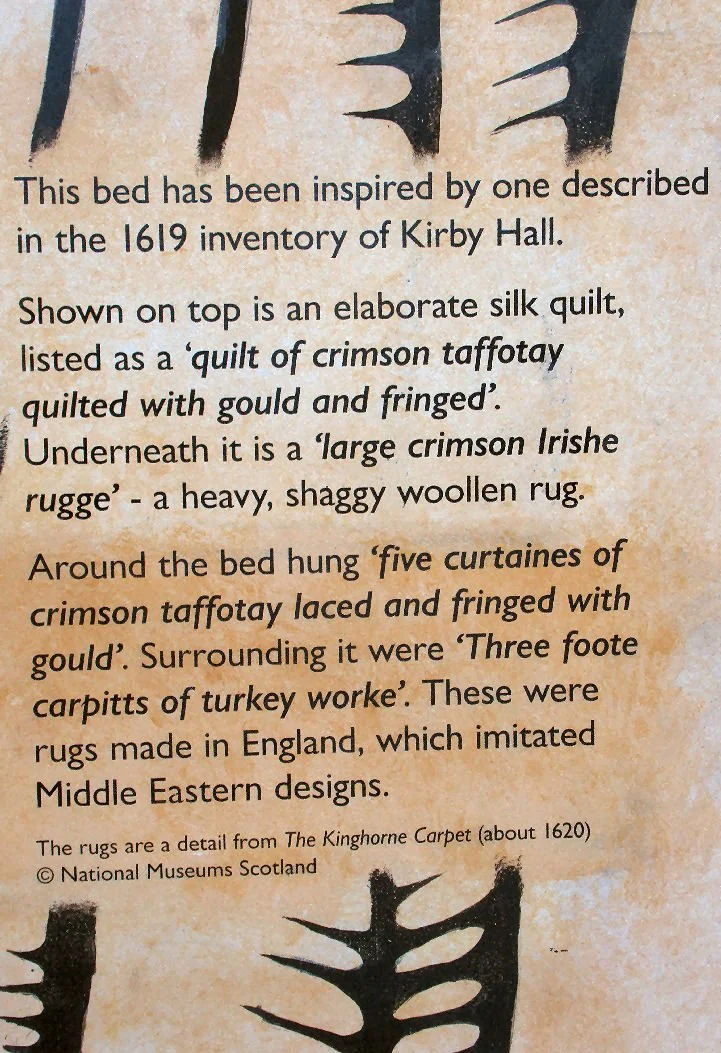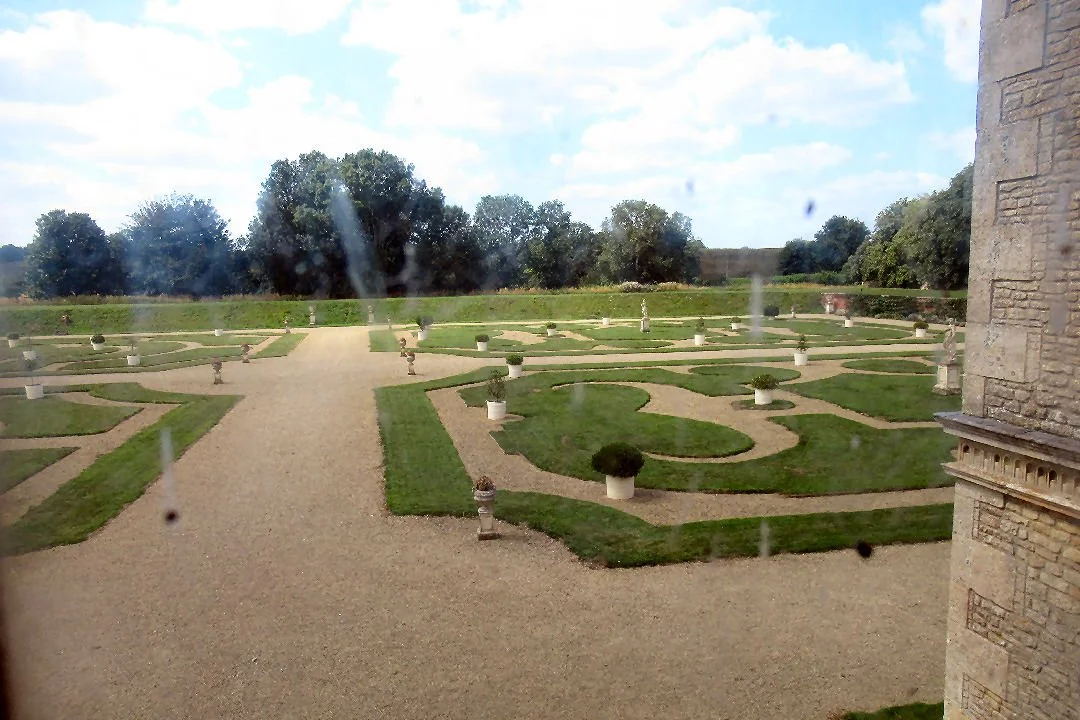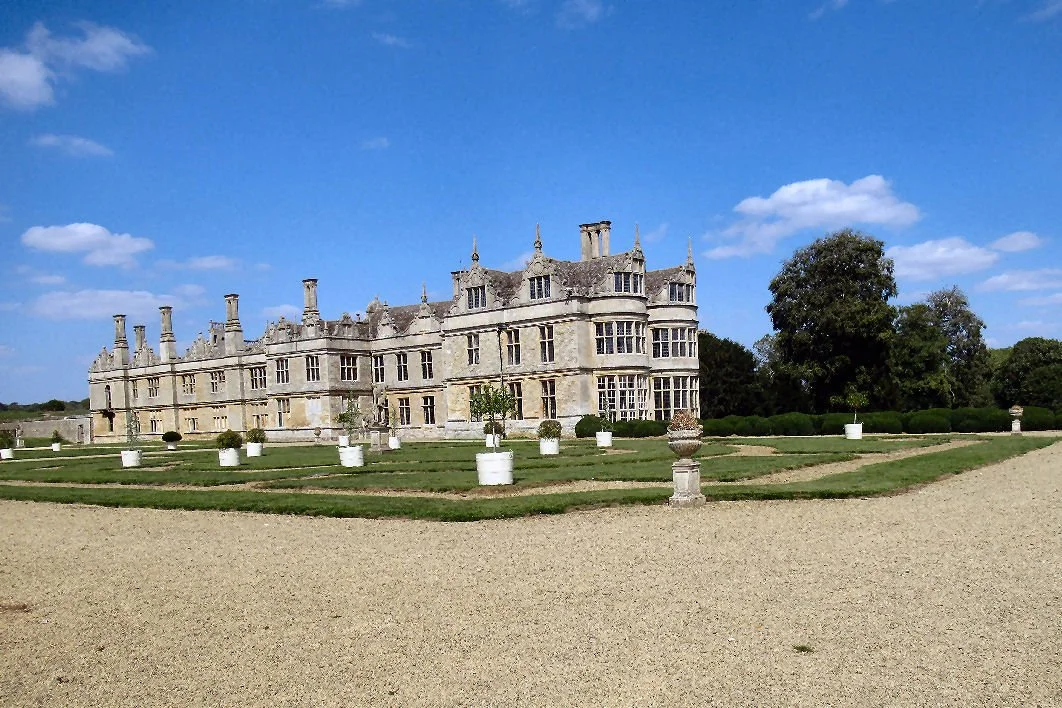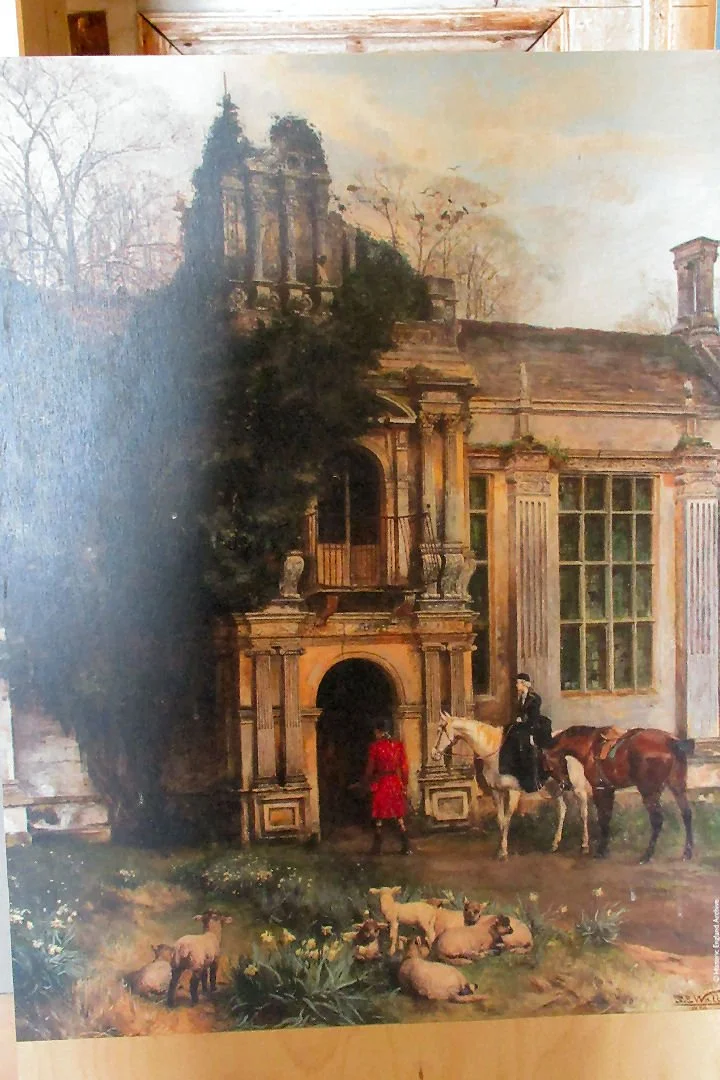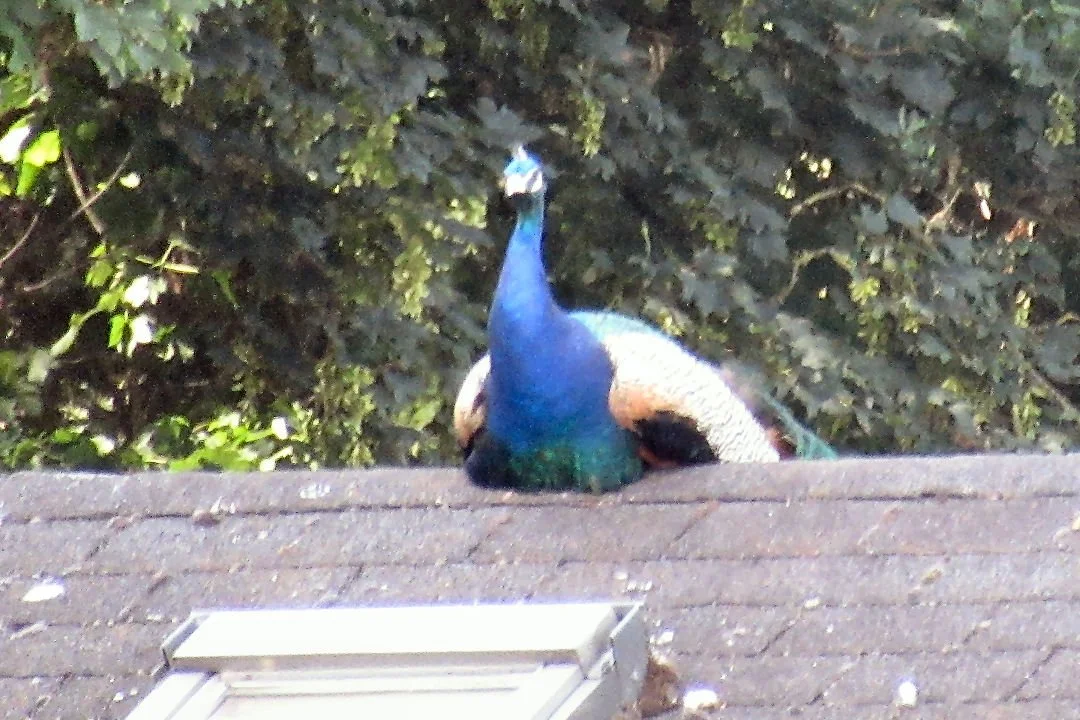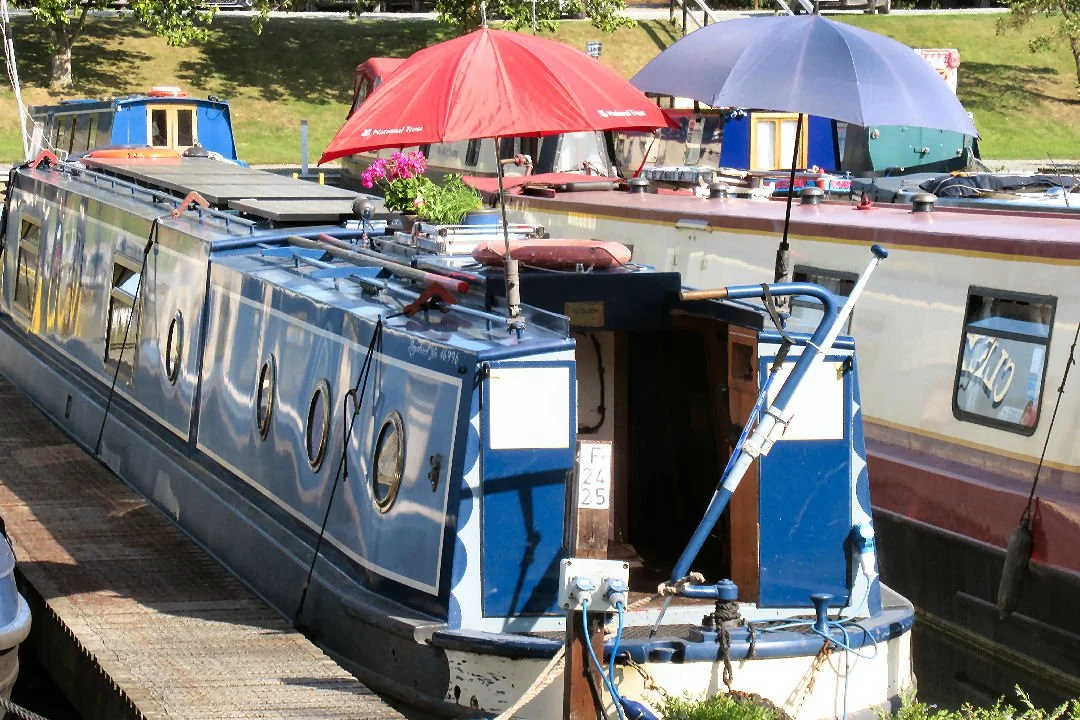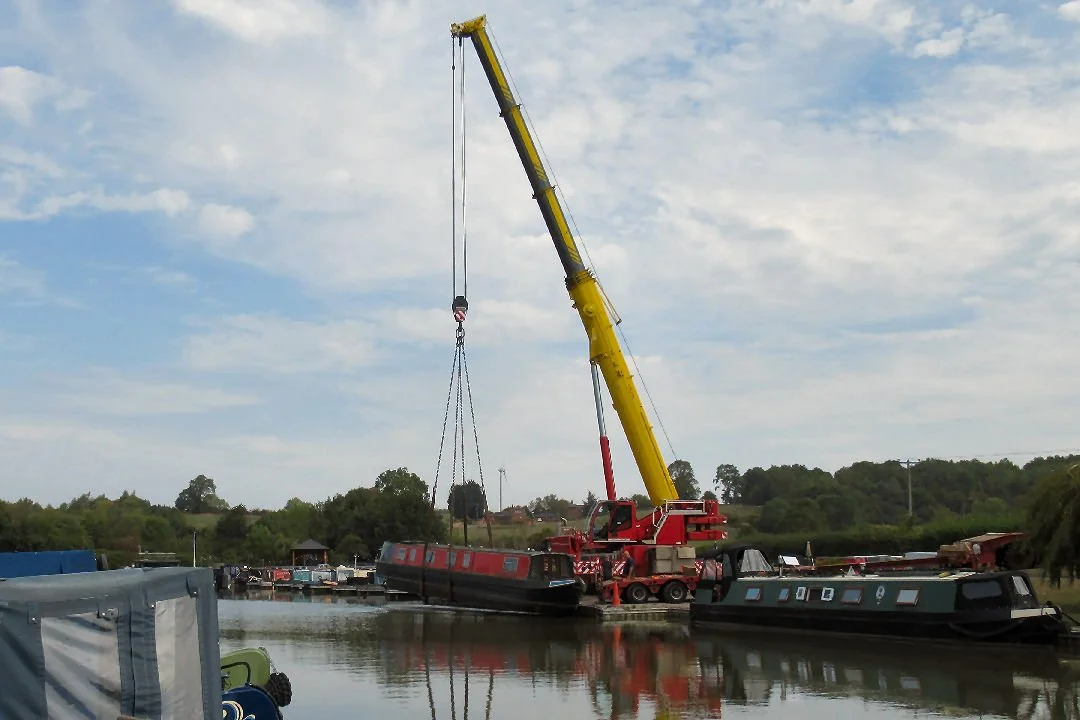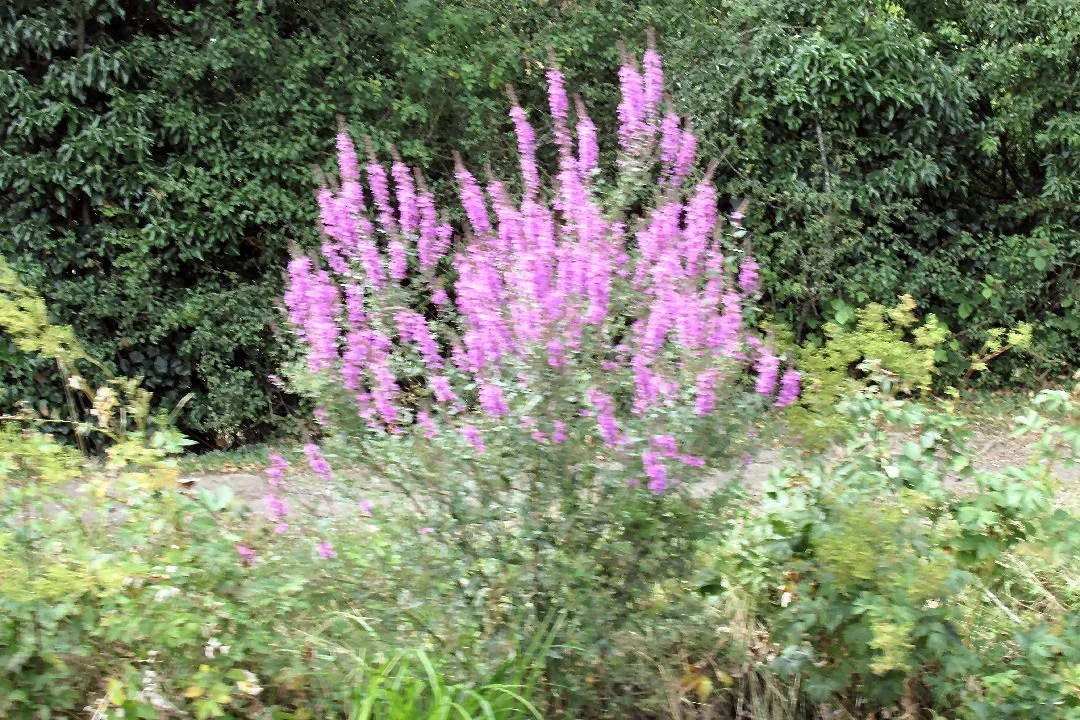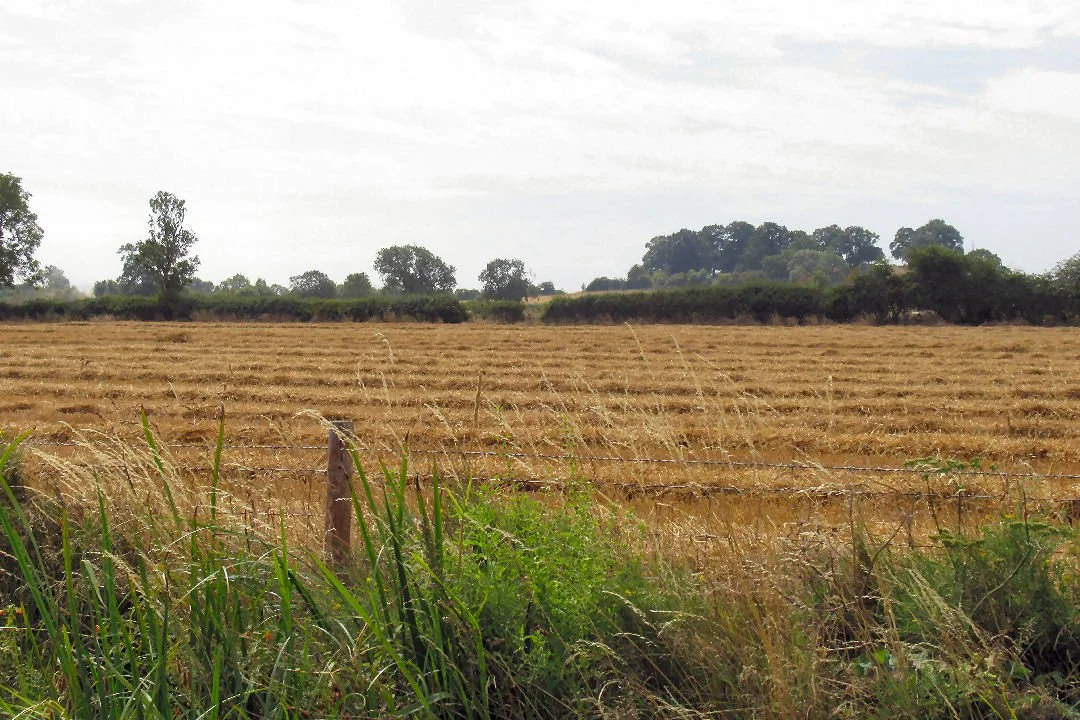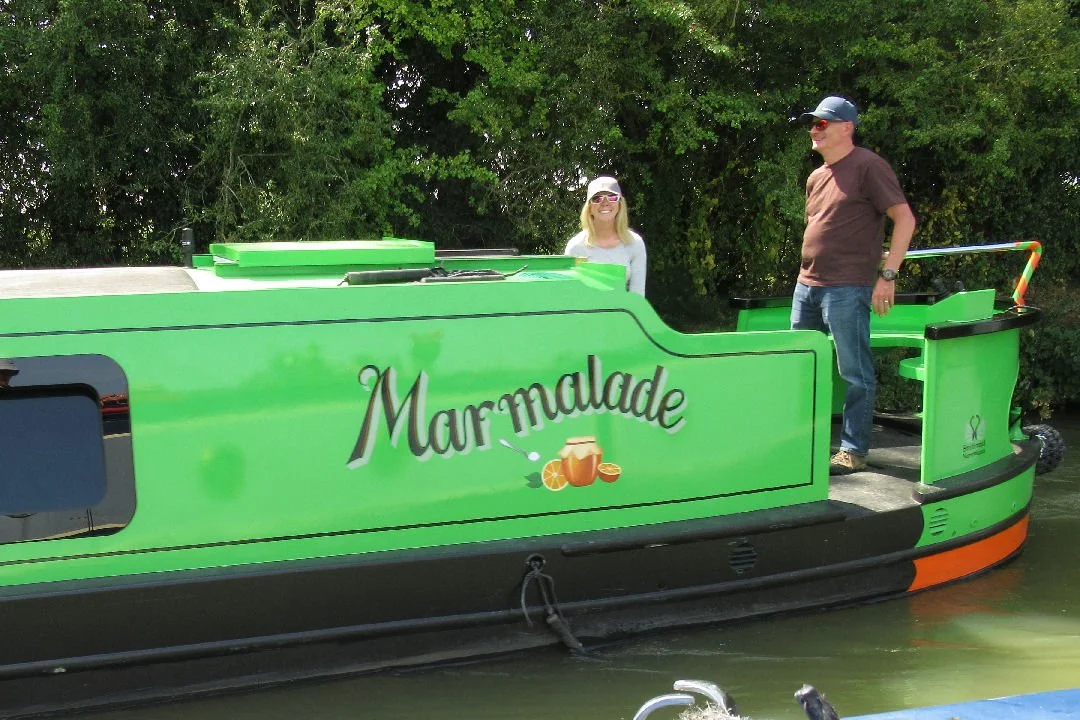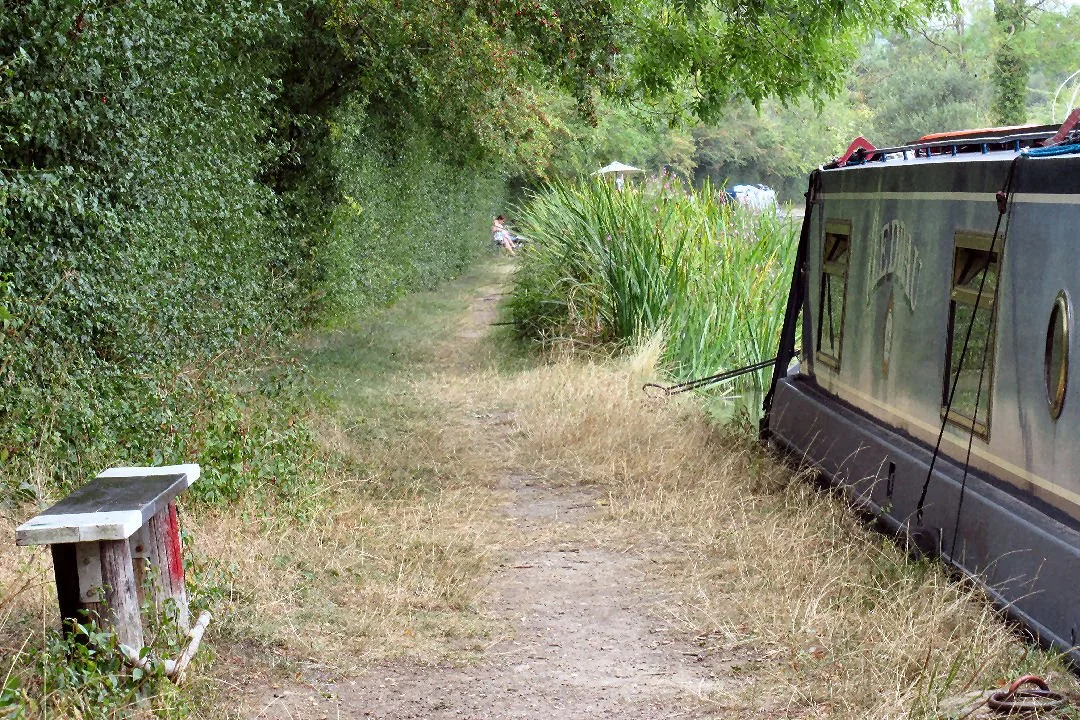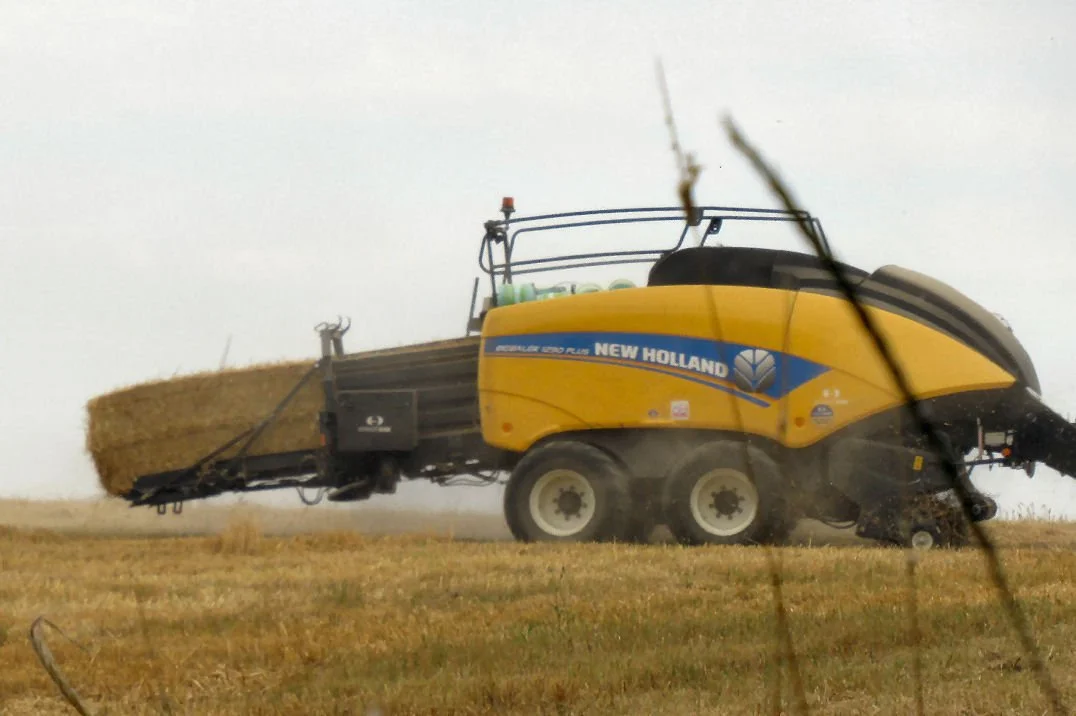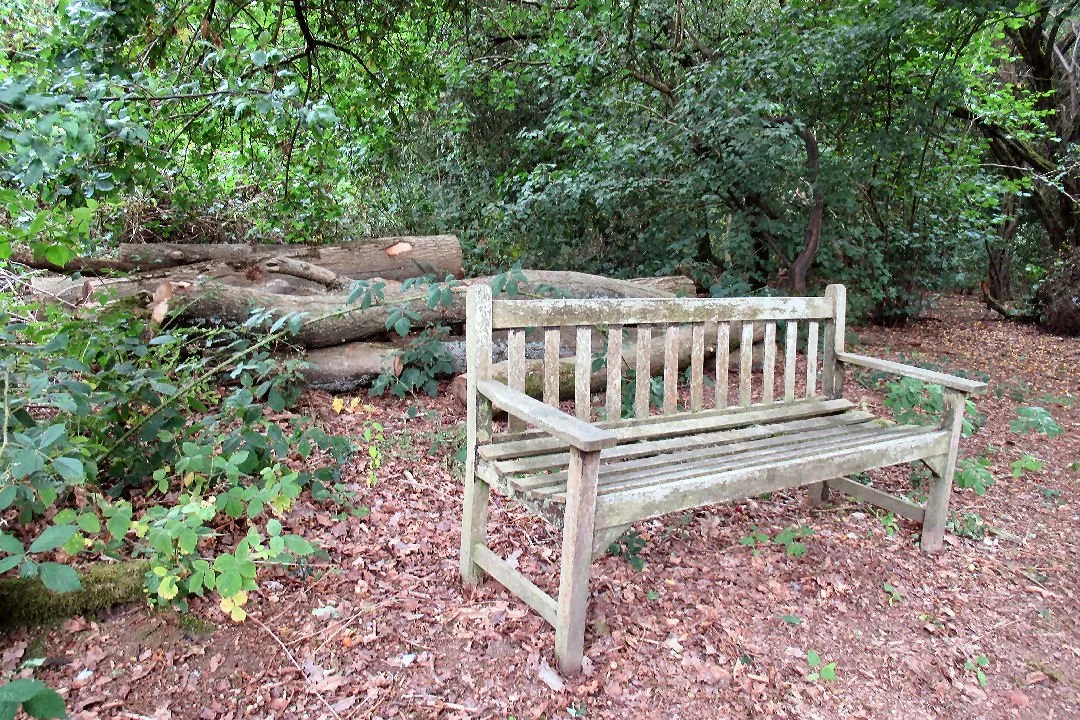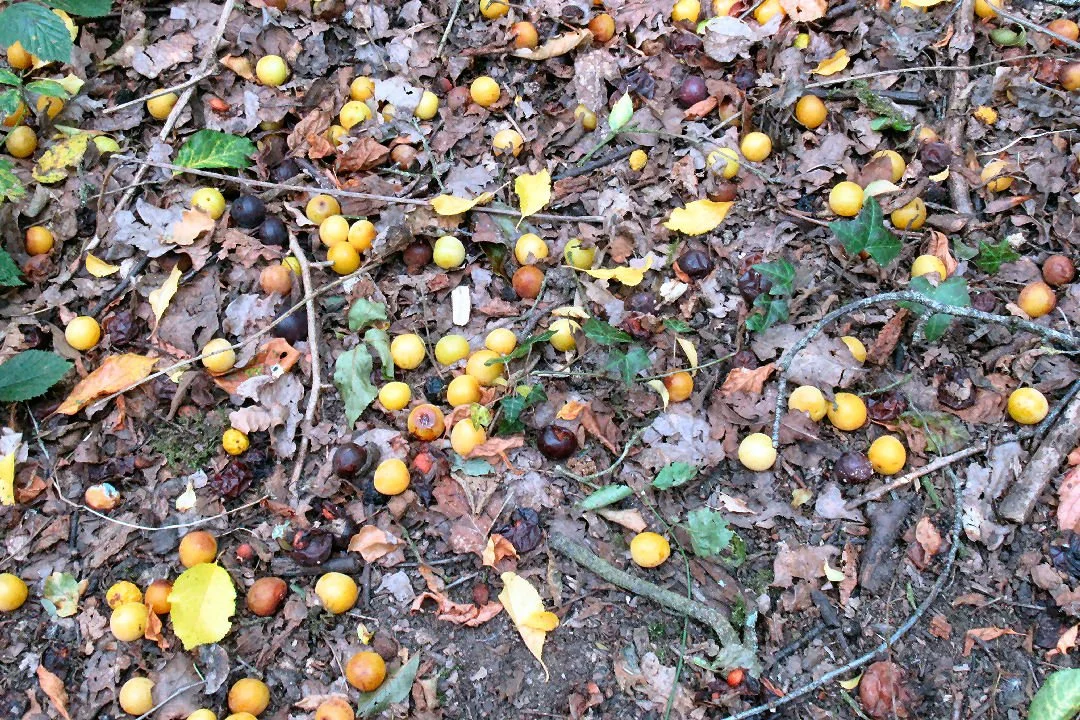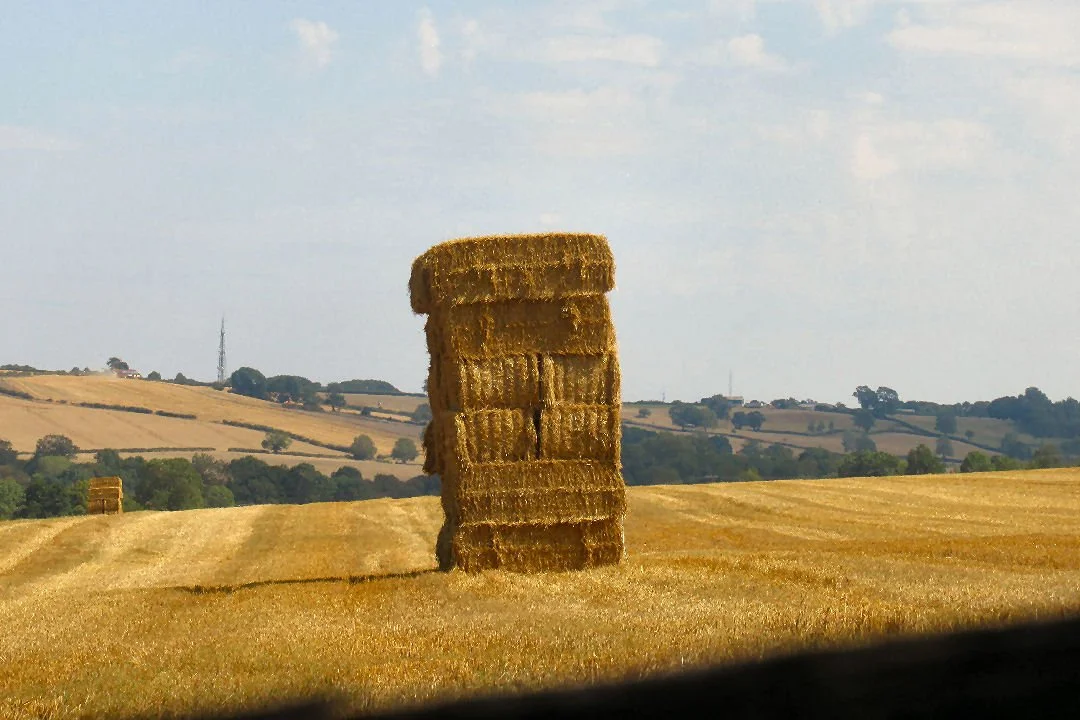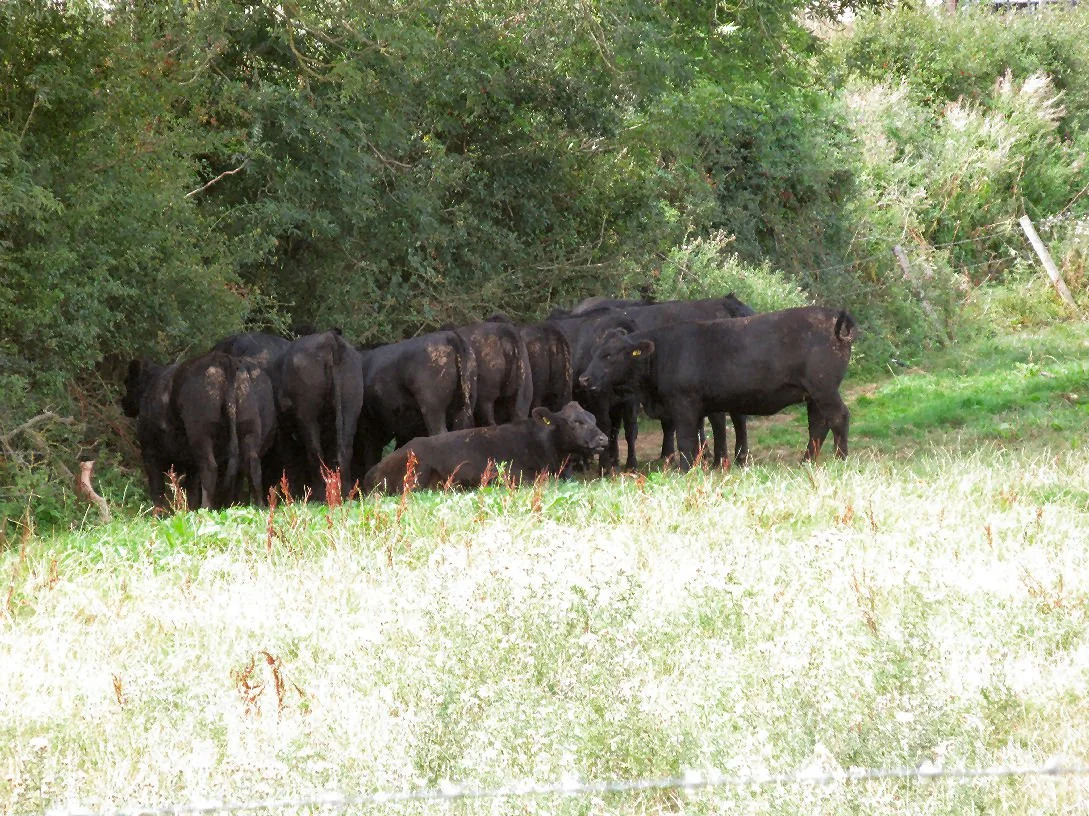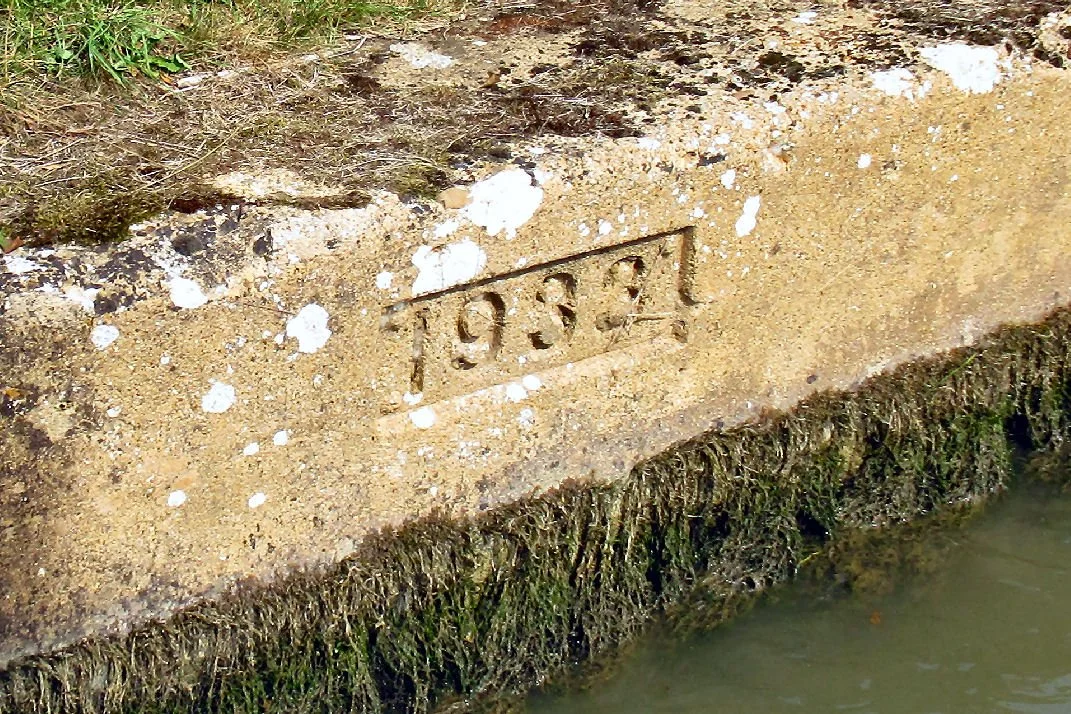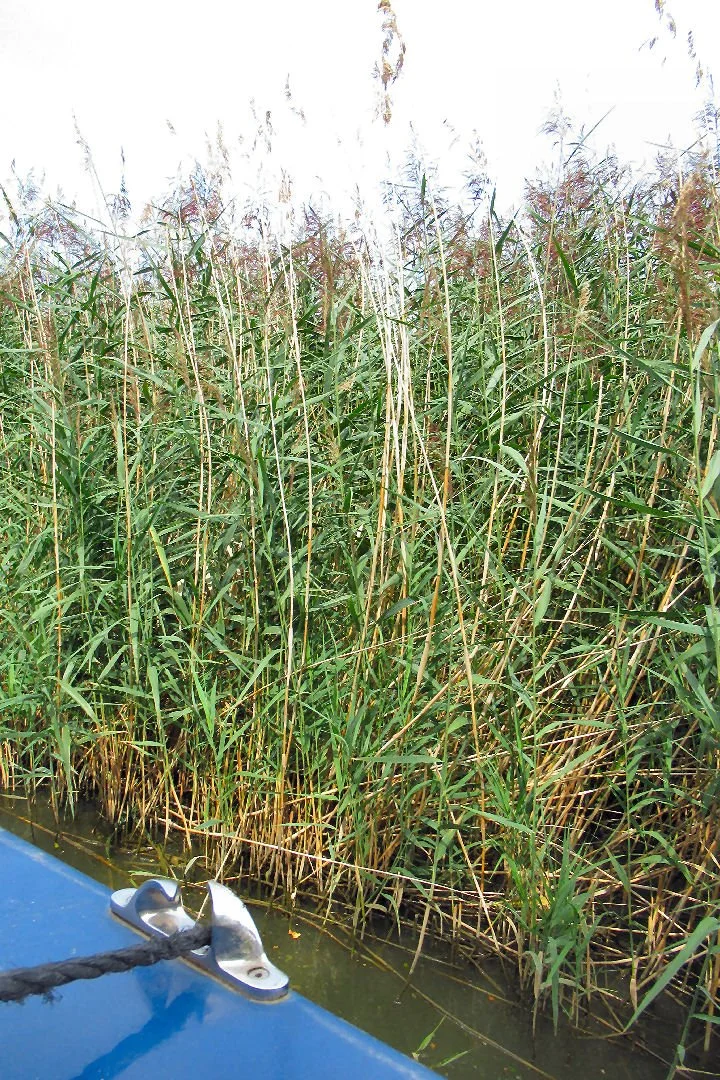The short and the tall of it
“You’re short” were the last words Cal Guy Jnr said to Boatwif on the day before he flew back to the USA. There is truth in his statement – but he now seems to live at a different altitude from certain members of the family.
Then there he was on a FaceTime call last night (“You’re short,” he reiterated before reeling off the daily lesson schedule for the new semester about to start: World History, Physics, Engineering, Geometry, PE, English. It sounds rather intimidating! Good luck to him and to all students about to start the new academic year…
Locally, during lockdown, Boatwif had been delighted to come across a little boat bobbing on a nearby farm pond. She had checked on it from time to time. Then, a few weeks ago she made a return visit. if you peer through the greenery (laburnum?) now planted around the pond and know where to look you can just make out the stern of the boat…
Nearby was a new sign on a footpath gate
– and there in a yard were three, no four, alpacas.
Curious they were, lolloping out of the yard and across the paddock. They might be shorter than their llama and camel cousins but they still seemed quite tall to Boatwif!
For six nights a short term residence was taken up on Cleddau. “We’ll drive down and see you, before university term starts again,” said Cheshire Mum.
A plan was hatched for the Cleddau crew and the Cheshire Three to meet at Kirby Hall (an English Heritage site near Corby) for a wander and a picnic.
What lies behind these sturdy doors?
Behind is a staggeringly impressive frontage…
Ornamentation, symmetry, classical columns, pediments, elaborately carved stonework, a matching pair of recesses…
Who could afford such an imposing structure?
Kirby Hall was begun in 1570 by Sir Humphrey Stafford and then bought in 1575 by Sir Christopher Hatton. It’s a Grade 1 listed Elizabethan and 17th century country house. The classical references, influenced by French style, had not been used before in English fine houses.
Sir Christopher Hatton rose to become Queen Elizabeth 1’s Lord Chancellor and although Queen Elizabeth never visited Kirby Hall, it found favour with her successor, King James 1 of England / King James VI of Scotland, who made 9 visits here.
Once past the courtyards visitors enter the Great Hall. High up is a Musician’s Gallery – but in this house it was a place mainly used for servants to eat and to socialise.
Fine company were entertained in the state rooms which were further into the house.
There had been a Cleddau crew visit here before, during the 2022 River-Nene-broken-locks-enforced-stay-at-Oundle-Marina saga. (For a reminder see mid-section of this post here: See https://www.boatwif.co.uk/boat-update/meanwhile-03 ).
Onward, past the fine stone staircase, to review a time line of Kirby Hall’s history.
Tapestries in each room give some idea of how each state room was used.
See how Cheshire Mum and Techno Son-in-law might have looked if, transported back in time, they had been guests in Jacobean times…
Here in the Best Bedchamber details taken from a 1619 inventory indicate how the bed may have been dressed.
Beautiful windows in the Billiard Room and the Library overlook what was described in 1694 as ‘the finest garden in England’.
Large ornaments in classical style are positioned around the garden while the parterre, made up of lawn and gravel paths, exudes style and status. The gardens are expansive and the south facing wall provides splendid shelter and support for numerous fruit trees and ornamental flowers.
Parterre as seen from the house
Techno Son-in-Law checking his App for varieties of pear
How extraordinary it is that this great house, fine enough to entertain royalty and his entourage, by the late 1880s had had its roof stripped of lead and was largely in ruins. By then estate labourers, farmers and their animals were living within the dilapidated classical house.
Painting of Kirby Hall inhabited by farmers and animals…
Though there are no human residents at Kirby Hall now, several peacocks look remarkably at home!
Peacocks supervising people at the picnic tables
Peacock supervising visitors from its perch on the Visitor Entrance
A delightful day had been spent exploring the magnificent spaciousness of Kirby Hall’s house and gardens - before returning to the confines of a rather hot narrowboat!
Awoken the next morning by a hissing, graunching, large-vehicle-moving sort of noise, Boatwif and the Captain were surprised to see a very tall structure on Crick’s service wharf. A crane had arrived to lift one boat out and one boat into the water…
When the boat being lifted out was safely on the low loader Cleddau slipped past and turned right out of the marina.
It was late summer: the colour of the purple-loosestrife had increased in its intensity, there was evidence that the farmers had been very busy and two unfamiliar boats caught the eye.
A favourite mooring by Bridge 27 was free (A familiar mooring, eh, Pip, Mick and Tilly…!)
and there was a satisfying afternoon as laundry dried on the whirlygig and some marvellous agro-kit in the field opposite was deployed to hoover up the crop and regurgitate it as neat rectangular bales.
Driven by the heat to seek shade Boatwif strolled round nearby Mountain Barn woodland. Instead of heading on the uphill path she followed the path that parallels the canal. Had someone been sitting on the single seat that faces the canal? Had a bag of plums been dropped?
No – bright red, yellow and plum-coloured plums were not only squishy below the feet but also falling from the trees…The plums weren’t mentioned to the Captain. A woodland walk for him the next day provoked surprise and amazement: “Wow, there are plums everywhere,” he exclaimed. True!
The towpath proved a good viewing point for setting up a giant’s game of Agri-Jenga. More agri-kit (a tractor and an extended arm grabber) collected up the rectangular bales and stacked them into towers, six and seven tiers high. Would any tall giant be tempted to wriggle a bale out from the stack and see if the Jenga tower would still stand…
Off the next morning, just about another mile, to wind (turn) the boat round and head back south to the marina.
The country is short of water; the canals and waterways are under huge stress. In the heat cattle jostled for shade.
Some boaters had rigged a sunshade across the towpath. A dogwalker was exercising his dogs by tossing a toy into the canal for them to swim and retrieve it.
A date was noticed in the stonework near a bridge hole – why had it not been noticed before? Presumably it was installed as part of 1930s improvements
Cruising back south it seemed the bank-side reeds had grown even taller in the last couple of weeks…
By lunch time in a very slick operation – and in front of an audience of just one - Cleddau had slid stern-first back into her marina mooring.
Within an hour there was clamour outside – as Boatwif stooped on the front deck to clean the cabin windows she was supervised, indeed hassled, by the resident swan family, by both parents and their six offspring. Compared to ducks swans are tall creatures and will make their presence known by creeping up close, by jostling hopefully for food, by tapping their beaks on windows and cabin sides. The more brazen will even poke their heads through open side hatch doors.
Cruise stats since last post: 10¼ miles
In this strange dry summer of canal and river restrictions the Cleddau crew now look back on their May (Oxford Canal to Cropredy) and June (Grand Union to Weedon Bec) boat trips as long distance cruises!
Everything is relative!
